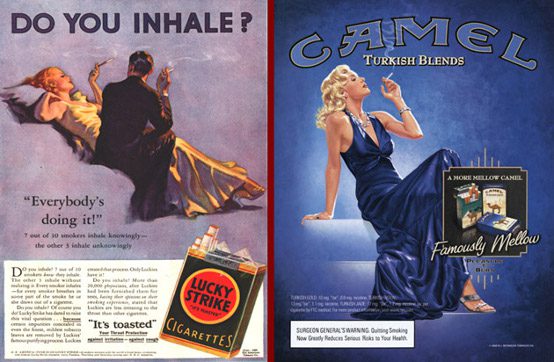Public Policy’s Absent Aesthetics

What she said
“I smoke because I’m hoping for an early death,And I need to cling to something…”
–the Smiths, “What She Said”
What do you notice about this description (by a writer I respect immensely) of the failure of nicotine patches to replace cigarette smoking?
Unfortunately, [Johann Hari] is on much shakier ground when it comes to critically examining science and suggesting solutions. For example, in a discussion of nicotine addiction, he argues that because the nicotine patch only helps people quit 17.7 percent of the time, this means that only that proportion of cigarette addiction is due to the action of the drug nicotine and the rest of the addictive behavior is simply determined by the person’s background and social environment. While those factors certainly matter, this completely ignores the role that dosage, scheduling of dose and route of administration have in addiction—none of which are unrelated to the way the chemical itself works.
(full article, in which this is a side note)
What leapt out to me was the absence of the aesthetic side of smoking vs. wearing the patch. I don’t just mean that smoking looks good, although it does: Smoke dissolves like perfect conversation. Smoke turns women into chapels.
What I mean is that all these aesthetic associations reinforce nicotine addiction. The sights and smells and sounds of smoking (tapping the cigarette against the pack; I knew one woman who made a little kiss sound every time she took a drag) intertwine in memory with the release, calm, or rush of nicotine. Of course alternatives that lack any aesthetic value aren’t real replacements.
This isn’t a brief for smoking. The classic book on this subject is Richard Klein’s Cigarettes Are Sublime, which he wrote in part as a (successful) pathway toward quitting. It’s his elegy for his habit. Klein’s book is countercultural—to some, even shocking—because it dares to admit aesthetic motives into a conversation that has been wholly colonized by health-and-safety language.
Mainstream discussion of public policy, or even (in secular contexts) personal moral behavior, proceeds as if health, safety, economic prosperity, and happiness are the only legitimate motives for action. More than that: We talk as if health, safety, economic prosperity, and happiness are the only possible motives for action. This is why we fail to understand the power of religion to motivate behavior. (See also: all the baffled concessions that AA may help people because it gives them a community. Yes, I’m sure that’s often true and usually important, but I suspect proponents of the 12 Steps are not lying when they say that unconditional surrender to a Higher Power has something to do with it.) This is why we try to justify moral claims on the basis of research data purporting to show that they make people richer or safer. This is why we try to figure out what a father is so we can build a replacement—and, on the other side of our family-structure arguments, why we unintentionally imply that there’s no such thing as good-enough parenting.
I don’t want to recapitulate Paul W. Kahn’s excellent Putting Liberalism in Its Place—a liberal’s acknowledgment that the liberal categories of reason/discourse and desire/choice don’t exhaust the possibilities for human motives—so I will just say a few things.
First, understanding the aesthetics behind our misdeeds can actually help us replace them. A lot of the early work of sobriety for me involved accepting what I really got from drunkenness—the ecstasy, the cheap imitation of hope, the acrid autumnal smell and upper-piano-keys sound of whiskey toppling over ice—and either finding a more sublime expression of these things in God, or kissing them goodbye.
Second, encouraging people to view their lives as a quest for material well-being is not only false to human experience; it’s banal and degrading. We were made for self-gift, not success, or even stability.
Third, we are aesthetic animals inescapably, so we smuggle in the aesthetic politics we disown. We do allow ourselves an aesthetic politics of smoking and other drug use, but it’s not a politics that fosters empathy for smokers or offers a greater sublimity than the one they’re (sometimes) seeking. It’s a politics of disgust and shame. We allow ourselves to be disgusted by smoking and smokers: Many of us are proud of our revulsion at the smell of smoke, or our disdain for the weakness of those who smoke. (Like most of our politics of personal behavior, this is a covert form of class war on the part of the rich and aspiring-to-be-rich.) Why do we allow ourselves the worst, most judgmental part of aesthetic politics, but view any talk of beauty as trivial and abhor any talk of finding meaning in suffering?
Once you name the willful exclusion of aesthetics from our conversations about policy and personal conduct you notice it everywhere: in our understanding of depression, for example. So this post is an admittedly sketchy attempt to name the thing, so we can recognize it whenever it raises its banal head.
Eve Tushnet is a TAC contributing editor, blogs at Patheos.com, and is the author of the recently-released book Gay and Catholic: Accepting My Sexuality, Finding Community, Living My Faith.
Comments